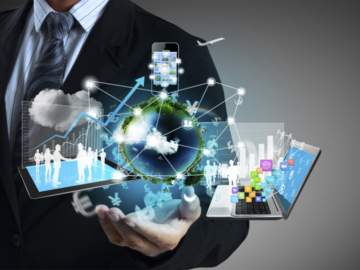 We’re living in a world where the pace of change can feel overwhelming; the rate at which technology is transforming everything around us is unprecedented.
We’re living in a world where the pace of change can feel overwhelming; the rate at which technology is transforming everything around us is unprecedented.The speed of change is only going to increase.
Three global trends have emerged that are heavily impacting our lives. The first is digitization. We’re surrounded by technology and using it at every moment.
Look at how much data we use — according to research from PwC last year, 90 percent of all data that exists today was created during the last two years. With the launch of 5G across the Gulf last year, a world-first, our use of data across the region is going to skyrocket.
City-bound
The second trend is urbanization. Today, 55 percent of the world’s population lives in cities. That number is going to rise to 68 percent by 2050, according to the UN.
Seven out of ten people on the planet will live in cities. Across the Indian, the Middle East and African region, the urban population has grown by 300 million residents over the past 10 years.
That’s the equivalent of over three cities with the population of the UAE every year. The third trend is sustainability. This is an area that I’m passionate about, and where we need to see the biggest change over the coming decade if we hope to build a more sustainable world for future generations.
Need to be on the agenda
There’s a great deal of debate about smart cities and how digitization is going to change how we live for the better, especially in places such as Dubai, whose leadership has embraced technology.
Sustainability hasn’t featured much in discussions around smart cities, and we need to change the conversation. Urbanization and technology can work together to contribute to sustainable growth. One example of this is energy consumption; cities consume 75 percent of global energy resources and account for 80 percent of emissions.
With the right energy management solutions in place, the energy consumption and greenhouse gas emissions of cities can be reduced.
Tapping their own energy fill
We are beginning to see a change. Consumers, businesses and governments are beginning to leverage technology to deploy digital infrastructure that both analyses data and finds solutions to reduce consumption.
One example of this is pairing renewable energy with energy storage. Energy consumers are becoming “prosumers” by setting up their own microgrids. They’re installing energy generation technologies, such as solar panels, and storage. They are creating their own energy and selling electricity back to utilities.
Research by Accenture suggests that 57 percent of consumers are already considering becoming power self-sufficient.
As concerns about climate change and energy security continue to influence the shift toward renewable energy, harnessing its full potential requires a way to store it. As a result, energy storage is proving to be an incredibly popular subject.
Smart cities can adopt a similar approach. By increasing the percentage of electricity (the most efficient energy source) in a smart city’s energy mix and by leveraging digitization to control demand, cities can be both smart and efficient.
This union of all-electric and all-digital is what is needed to create a new electric world, which is a more sustainable world. It brings us back to the first emerging trend of digitization.
The Internet of Things offers us the opportunity to reduce waste and improve efficiency across a city’s entire infrastructure. Many cities have already started the green journey. They’re deploying digital infrastructure that collects, manages and analyzes data from connected devices.
Right energy mix
They’re discovering new ways to proactively improve both the efficiency and quality of services. Studies indicate that 82 percent of cost-effective energy efficiency potential in buildings remains untapped — and in industry, more than 50 percent. There’s an opportunity to reduce both emissions and costs in one go.
Population growth, urbanization, and the demands of the digital age will put smart cities under increasing stress. Governments must develop and implement new technologies that champion sustainable living.
To me, the definition of a smart city is sustainability, where the city’s infrastructure and residents learn how to make the most of their energy. If a city isn’t sustainable, then how can it be smart?

This Post Has 0 Comments